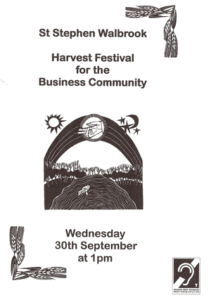Places of Worship

Westminster Abbey
Hear the Difference a Hearing Loop Makes: Church (video, 1 minute)
Why consider a hearing loop for your church? WELS Mission for the Deaf and Hard of Hearing (3:29 minutes)
For many, going to churches, mosques, and synagogues is an opportunity to sit quietly with our own thoughts sequestered from the busy-ness of complicated daily lives. But we also go to be inspired, to learn, to hear words that connect a deep past to our modern lives today. It is a place where people really want to hear, and where without an effective assistive listening system, many worshipers will sit in frustration, rather than in contemplation.
Few hard of hearing people elect the hassle and embarrassment of special receivers and headsets. They prefer what’s now available in most British and Scandinavian places of worship—having customized sound broadcast directly through their hearing aids using a hearing loop, rather than an FM system where they must find, borrow, clean, and return a receiver.
Possible Assistive Listening System Locations
- Confessionals
- Parlors
- Private rooms for counseling
- Sanctuaries
- Smaller rooms for study groups
Hearing loop systems are preferred for houses of worship because personal receivers and especially headphones are often a problem. There is good evidence that many people do not extend themselves to identify their need, collect personal receivers ahead of time, and wear rather noticeable headsets. Such receivers are always required for FM and infrared systems.
Rochester HLAA chapter
Slowly the members of our congregation have been updating their hearing aids to have their telecoils activated and [in four months] we’ve gone from one user originally to over 10 now. Several members have commented on the clarity and ease of use.
MW, Grand Rapids, MI
Samples
Hearing assistance. For the hard of hearing, ____ Church offers a loop system. Hearing aid wearers with a “T” (telecoil) setting can now hear the service broadcast directly through their hearing aids. Others desiring hearing assistance may check out a portable receiver and headphones from an usher. For more information about loop systems, including home TV room applications, visit www.hearingloop.org.
“The whole of the church is served by a hearing loop. Users should turn their hearing aid to the setting marked T.” The first sentence of Westminster Abbey’s program for the 50th anniversary celebration of the Queen’s coronation, 2003.
Alternatively, the hearing loop logo, with its explanation, can be integrated into the bulletin cover:

WELS-Understanding Hearing Loops Brochure (2 pages, pdf)
Resources
- Church video, what does a hearing loop sound like? (1 minute, website)
- Historic chapel in and out of the hearing loop Starkey audio clip (17 seconds, website)
- For more about looping worship spaces, see this interview (PDF), an article on Tech Worship-Get in the Loop (PDF), an article Lets Loop Americas Worship Centers (PDF), or see an online article “Hearing the Word.” Read one worshiper’s response (PDF) published in The Banner, with permission.
- For a national list with all hearing loops for a specific faith tradition, please see our webpage Hearing Loop Lists
- Zotero online library of 150+ articles, websites, and examples.
Below are a few examples of facilities with hearing loops:
- British houses of worship–including British cathedrals–are extensively looped.
- Read a one-page synopsis, “Let Them Hear: Why Not Get Your Church Looped?” from Reformed Worship.
